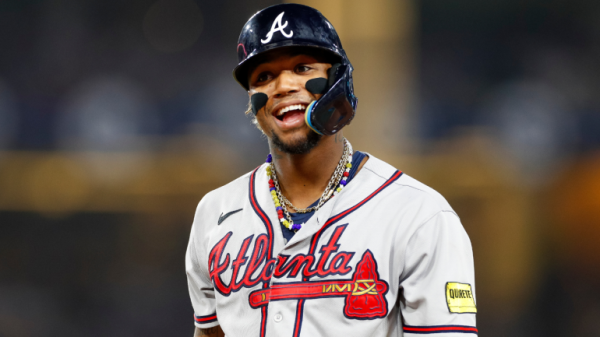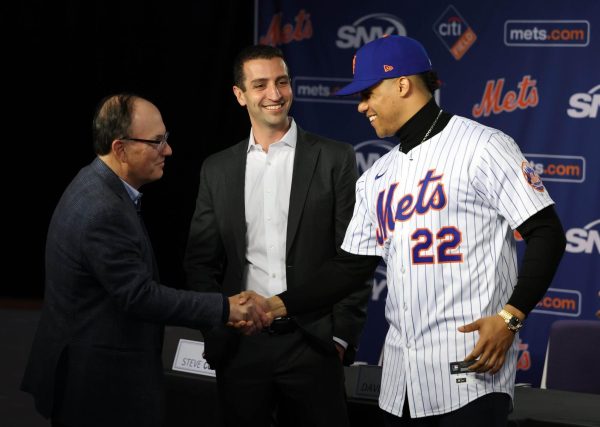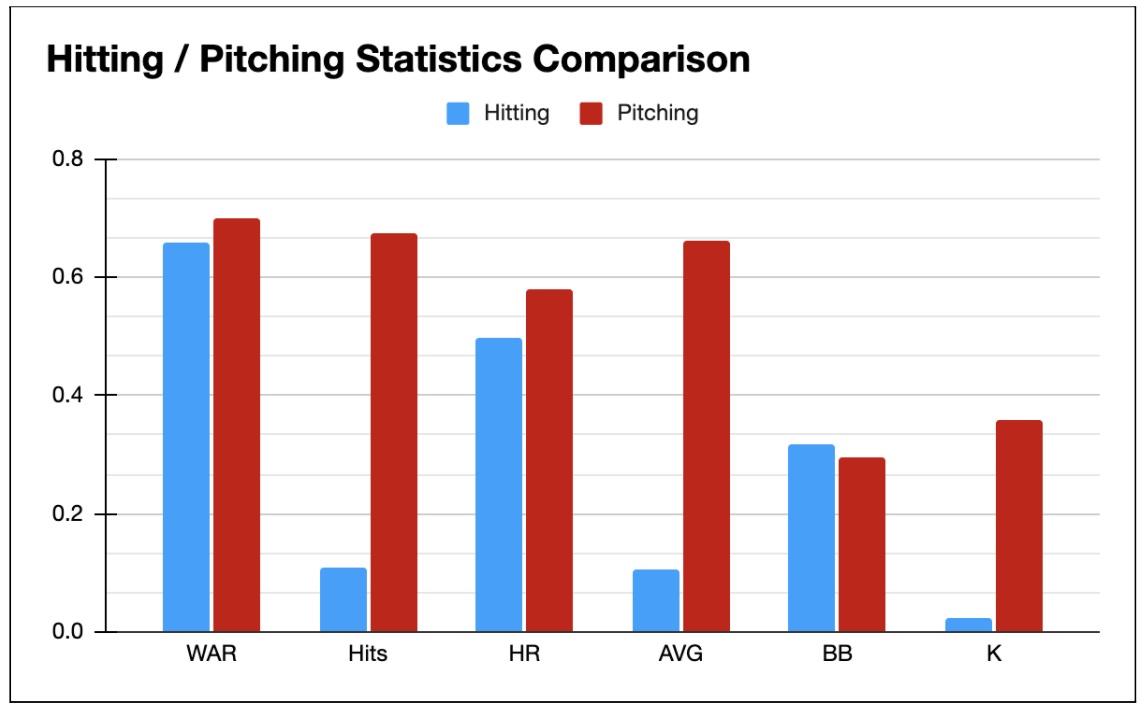Baseball, more than any other major sport, has always had a complex connection to numbers. For decades, batting average (AVG), runs batted in (RsBI), wins (W) and earned run average (ERA) were the traditional standards for evaluating player performance.
However, the 21st century brought a significant shift in how Major League Baseball teams evaluate their stars, with advanced statistics like on-base percentage (OBP), on-base plus slugging (OPS), walks plus hits per inning pitched (WHIP), and everyone’s favorite all-purpose number, wins above replacement (WAR), now dominating conversations in front offices.
This statistical revolution, often referred to as the “sabermetrics” movement (named after the Society for American Baseball Research and popularized by baseball writer Bill James), has not only changed the way players are assessed but also how teams are constructed and how contracts are negotiated. The shift underscores a desire to go beyond surface-level stats to truly understand a player’s value.
The Decline of AVG and RsBI
Batting average, once the most popular of hitting statistics, has steadily fallen out of favor. While average tells you how often a player gets a hit, it ignores other crucial aspects, such as a batter’s ability to draw walks or hit for power. This lack of context became increasingly evident as teams sought ways to maximize run production. Similarly, RsBI, once the primary measure of a hitter’s clutch ability, is now viewed with skepticism because it is heavily dependent on the performance of a player’s teammates and the batting order.

Consider the 2023 MVP race as an example. While Ronald Acuña Jr. made great efforts with a .337 batting average and 106 RBIs, it was his MLB-leading 1.012 OPS and 41 home runs that truly highlighted his dominance. OPS, which combines a player’s on-base percentage (OBP) and slugging percentage (SLG), gives a more comprehensive picture of a hitter’s overall production, accounting for both their ability to get on base and hit for power.
Likewise, Shohei Ohtani’s MVP-caliber campaigns have leaned heavily on advanced metrics, with his WAR (more on that later) consistently showcasing his two-way value as a hitter and pitcher.
OBP and OPS: The Modern Offensive Standards
On-base percentage has become a cornerstone of offensive evaluation, emphasizing the importance of plate discipline and avoiding outs. Today, OBP is a core statistic for teams seeking to construct efficient lineups.
OPS has emerged as perhaps the most widely recognized advanced stat among casual fans. In 2004, Barry Bonds famously posted an absurd 1.422 OPS, which cemented his place as one of the greatest hitters of all time. More recently, players like Aaron Judge (who just this past season led the league with a 1.159 OPS) and Freddie Freeman have become household names not just for their home run totals, but for their ability to sustain high OPS figures year after year.
WAR: The King of All Stats
If there is one metric that epitomizes the modern era, it’s wins above replacement. WAR attempts to quantify a player’s total value to their team in terms of wins, accounting for offense, defense, and baserunning for position players, and overall effectiveness for pitchers. It has become a universal language in baseball, leveling the playing field between traditionalists and analytics enthusiasts.
In 2012, despite leading all of Major League Baseball in Wins Above Replacement, Mike Trout lost out for the American League Most Valuable Player (MVP) to Triple Crown winner Miguel Cabrera, who had dominated the AL in the traditional categories of average, home runs, and runs batted in, but who had been demonstrably less valuable to his team. Thanks to the ascendance of WAR, it is extremely unlikely that a similar situation will happen again anytime soon.
The Transformation of Pitching Evaluation
Pitching metrics have also undergone a similar revolution. ERA, while still a useful tool, doesn’t always tell the full story, whereas WHIP, a statistic that measures walks and hits allowed per inning pitched, provides a clearer picture of how effective a pitcher is at controlling baserunners.
For instance, Jacob deGrom’s dominance in recent years is better encapsulated by his WHIP than his ERA. In 2018, deGrom’s WHIP of 0.91 highlighted his ability to keep runners off the bases, complementing his league-best 1.70 ERA. Similarly, advanced metrics like FIP (fielding independent pitching) and xERA (expected ERA) have gained traction, stripping away defensive factors to focus on a pitcher’s ability to control outcomes through strikeouts, walks, and home runs allowed.
The Influence of Moneyball and Analytics
The turning point for this statistical shift can be traced back to the Oakland Athletics’ “Moneyball” era (go read my first article) in the early 2000s. General manager Billy Beane and his team used advanced metrics to identify “undervalued” players, famously prioritizing OBP over traditional stats. The success of the A’s on a limited budget inspired a wave of analytical thinking across MLB, culminating in the proliferation of proprietary metrics and tracking technologies like Statcast.

Statcast, introduced in 2015, has opened new dimensions in player evaluation. Metrics like exit velocity, launch angle, and expected batting average (xBA) provide insights into underlying skills, helping teams project future performance rather than relying solely on past results.
The Shift in Contract Negotiations
Advanced stats have fundamentally changed how players are valued in free agency and arbitration. In the past, players with high RBI totals or pitchers with impressive win-loss records commanded top dollar, and players who didn’t fit the archetype got left out. (Exhibit A: Dave Stieb.) Today, teams are paying closer attention to a player’s WAR, OPS+, and other advanced metrics to determine their worth.
Take Mookie Betts’ blockbuster contract with the Los Angeles Dodgers as an example. The 12-year, $365 million deal wasn’t just a reward for his MVP season in 2018. It was a recognition of his sustained excellence across multiple advanced metrics, including a career WAR over 60 at the time of the signing.

Just recently Juan Soto (unfortunately) signed with the Mets on a 15-year, $765 million dollar deal. Soto’s dominance in the OPS (.988) and WAR (9.7) categories placed him just below his (ex-)friend Aaron Judge and were most definitely the key factors in determining the value of his contract.
With this signing of the highest valued contract in MLB history, general managers across the board will be forced to pay more attention than ever to the new era of statistics.
